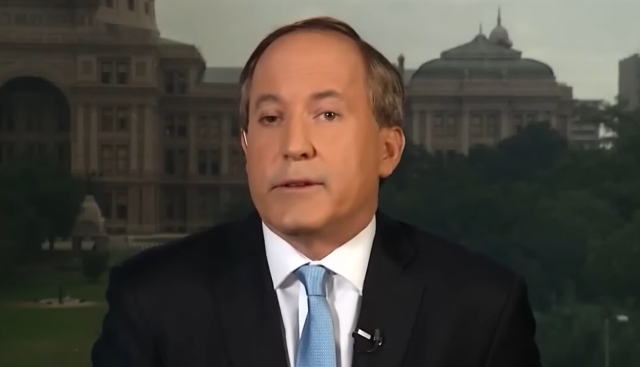 Parler
Parler Gab
Gab
- Sanae Takaichi, a hardline conservative, is set to become Japan's first female prime minister after defeating moderate rival Shinjiro Koizumi in the Liberal Democratic Party (LDP) leadership race.
- Takaichi, a protégé of former Prime Minister Shinzo Abe and an advocate of "Abenomics," takes over a party in crisis amid rising prices and voter discontent.
- She promises aggressive fiscal spending to stimulate growth, including tax cuts and subsidies, while maintaining fiscal prudence.
- Takaichi emphasizes strengthening the Japan-U.S. alliance and revising Japan's pacifist constitution to bolster national defense.
- Her historical revisionism and visits to the Yasukuni Shrine may strain ties with China and South Korea, while she seeks closer relations with Taiwan and other regional partners.
- Takaichi faces the task of uniting the LDP, securing public support and forging coalitions with opposition parties.
Takaichi's rise and her agenda for Japan
Takaichi’s victory is a symbolic milestone, making her the first woman to lead Japan’s ruling party. Yet, her approach to leadership brings new challenges. She is an advocate of “Abenomics,” Shinzo Abe’s aggressive fiscal and monetary policies aimed at stimulating economic growth, and she has made it clear that she will prioritize infrastructure investment, tax cuts and subsidies to address inflation and improve living standards. Takaichi has also emphasized the need for a stronger defense strategy, including revising Japan’s pacifist constitution and potentially forming security alliances with countries like Taiwan. Takaichi’s monetarist leanings, however, could worry markets. She has long criticized the Bank of Japan’s recent interest rate increases, arguing that higher rates are harmful to economic growth. Although she has softened her rhetoric post-election, her strong pro-stimulus stance may prompt the central bank to delay further rate hikes, putting downward pressure on the yen. The equity market might move higher in anticipation of increased fiscal expenditure, but JGB yields could rise on fears of higher spending, potentially leading to a bond market crisis.National security and geopolitical shifts
Takaichi’s ascension places her at the center of Japan’s global security strategy, with her emphasis on strengthening the Japan-U.S. alliance and promoting regional partnerships with countries like South Korea, Australia and the Philippines. She has vowed to avoid renegotiating the trade deal with the United States that lowered tariffs in exchange for Japanese investments. However, her nationalistic positions, particularly her regular visits to the Yasukuni Shrine and calls for constitutional revisionism, may strain diplomatic relations with China and South Korea. This could complicate Japan’s broader goal to assert its status and influence in the Asia-Pacific region. Takaichi has also called for an “equal partnership” with the U.S., a stance that reflects a desire to move away from the shadow of post-war, America-dominated globalization. This shift could reshape alliances in the region and redefine the balance of power in Asia.Challenges and potential risks
Takaichi’s most pressing task is to unite the LDP, which has faced consecutive election losses and internal divisions. The party needs to secure the cooperation of opposition parties to pass legislation in a parliament where the LDP no longer holds a majority. She will also need to navigate the complex relationship with the moderate centrist Komeito, her current coalition partner, whose leaders have expressed reservations about her ultra-conservative politics. Takaichi’s ability to balance ideological principles with the practical demands of government will determine her success in leading the fractured LDP. Moreover, her socially conservative views, such as opposition to same-sex marriage and changes in surname rules, have limited her broader appeal. These stances could alienate key demographics and restrict her ability to build a lasting legacy.Charting a new course for Japan
As Takaichi prepares to take office, she faces monumental challenges—reinvigorating the economy, reviving public trust and reshaping Japan’s role in the world. Her election represents a shift to the right in Japan’s political landscape, driven by a desire to address economic stagnation and social transformation. However, whether her policies can resonate with voters and restore the LDP’s dominance remains to be seen. Takaichi’s success will depend not only on her ability to implement her agenda but also on her capacity to address the concerns of a diverse electorate. Takaichi’s leadership will undoubtedly send ripples through domestic and international politics. Her policies could lead to a stronger, more assertive Japan on the global stage, but they may also come with significant risks. The road ahead is fraught with uncertainties, but as Takaichi prepares to lead the nation, the eyes of the world will be watching. Sources for this article include: ZeroHedge.com Reuters.com ABCnews.go.comPhilippine Coast Guard condemns Chinese aggression near disputed island
By Belle Carter // Share
Ukraine faces dire winter as ENERGY COLLAPSE looms due to Russian strikes
By Ramon Tomey // Share
Free AI model “Enoch” released to combat global censorship and monopolistic control
By Finn Heartley // Share
German mayor tortured and stabbed by adopted daughter—no arrest was made
By Willow Tohi // Share
Governments continue to obscure COVID-19 vaccine data amid rising concerns over excess deaths
By patricklewis // Share
Tech giant Microsoft backs EXTINCTION with its support of carbon capture programs
By ramontomeydw // Share
Germany to resume arms exports to Israel despite repeated ceasefire violations
By isabelle // Share










